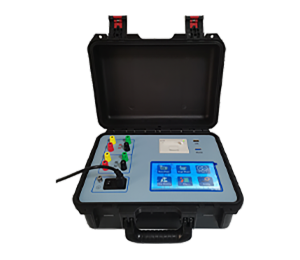 English
English


tan delta measurement of transformer
Tan Delta Measurement of Transformers An Essential Diagnostic Tool
The reliability and efficiency of electrical transformers are paramount in power systems, given their critical role in voltage regulation, energy distribution, and overall infrastructure stability. One effective diagnostic technique employed to assess the insulation health of transformers is the Tan Delta measurement, also known as the Power Factor test. This method provides invaluable insights into the condition of insulation systems, allowing for proactive maintenance and minimizing the risk of failures.
What is Tan Delta Measurement?
Tan Delta, or the tangent of the delta angle, is a parameter that describes the electrical losses in the insulation material. When an electric field is applied to an insulating material, some energy is lost as heat due to dielectric losses. These losses can be quantified as a ratio of the resistive component to the capacitive component of the current flowing through the insulation. Tan Delta is defined as the ratio of the reactive power (due to capacitance) to the real power (due to resistance), hence providing a measure of the efficiency of the insulating system.
The Tan Delta measurement is typically performed at power frequency, often 50 or 60 Hz, which allows for a direct comparison of the insulation condition over time. A rising Tan Delta value often indicates deterioration in insulation quality, which can result from aging, moisture ingress, electrical stresses, or manufacturing defects.
Importance of Tan Delta Measurements
1. Condition Monitoring Regular Tan Delta tests help in monitoring the health of the transformer’s insulation system. By establishing a baseline value, engineers can track changes over time, facilitating condition-based maintenance strategies.
2. Predictive Maintenance The ability to detect insulation aging before catastrophic failures occur allows for timely interventions. This predictive maintenance approach not only reduces downtime but also helps in optimizing maintenance costs.
tan delta measurement of transformer

3. Risk Mitigation Identifying potential insulation failures in advance can significantly mitigate risks associated with transformer outages, including financial losses, damage to equipment, and potential safety hazards.
4. Enhancing Lifespan By understanding the insulation condition through Tan Delta measurements, utilities can make informed decisions about transformer operation and maintenance, ultimately enhancing the lifespan and reliability of the equipment.
Measurement Techniques
The Tan Delta measurement is typically carried out using a dedicated test set that applies a high-voltage signal to the transformer and measures the resulting currents. The test involves both a capacitive and resistive component of the current, allowing for the calculation of the Tan Delta value. It is generally recommended to conduct these tests under controlled conditions, considering factors such as temperature and humidity, which can influence the readings.
In practice, Tan Delta measurements can be performed on various components of the transformer, including bushings and windings. Monitoring these values over time creates a reliable database for evaluating transformer health and can lead to more informed asset management decisions.
Conclusion
Tan Delta measurement serves as an important diagnostic tool in the maintenance and management of transformers. By enabling utilities to assess insulation health effectively, this technique aids in the identification of potential failures, enhances operational reliability, and contributes to the overall efficiency of energy distribution systems. As the demand for reliable electrical infrastructure continues to grow, the role of such diagnostic tests will become increasingly critical in ensuring the longevity and safety of transformer operations.
-
Differences between open cup flash point tester and closed cup flash point testerNewsOct.31,2024
-
The Reliable Load Tap ChangerNewsOct.23,2024
-
The Essential Guide to Hipot TestersNewsOct.23,2024
-
The Digital Insulation TesterNewsOct.23,2024
-
The Best Earth Loop Impedance Tester for SaleNewsOct.23,2024
-
Tan Delta Tester--The Essential Tool for Electrical Insulation TestingNewsOct.23,2024





